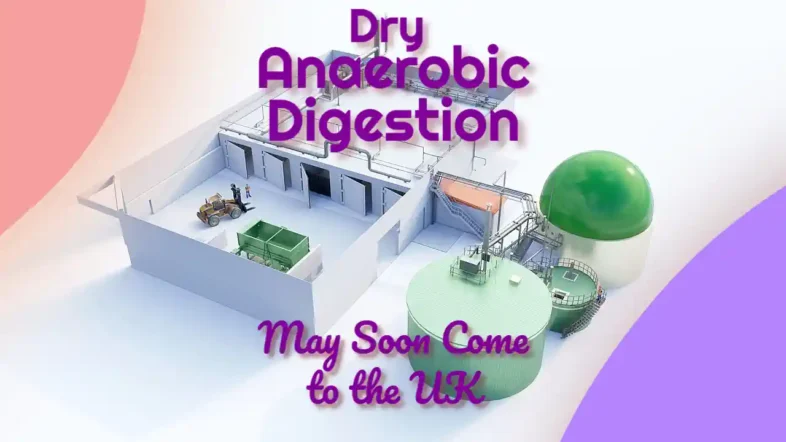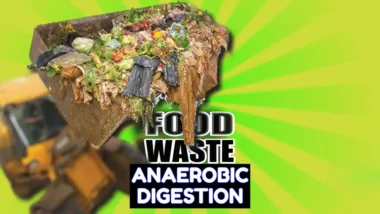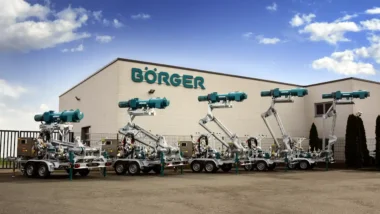Introduction to a Groundbreaking Initiative!
The Greater Manchester Combined Authority (GMCA) Waste and Recycling Committee has recently taken a bold step towards adopting an alternative anaerobic digestion process technology that could extend the biowaste management sector in England to many dry organic wastes not hitherto considered useful for energy production.
With approval to commission the building of two dry anaerobic digestion (AD) plants in the North West, England is poised to witness the establishment of its very first UK dry anaerobic digestion facilities.
This move is part of the GMCA’s comprehensive “Biowaste Management Strategy”, which awaits full approval from the GMCA.
[boomdevs_toc]
Understanding Dry Anaerobic Digestion
Dry Anaerobic Digestion, also known as High Solids AD and Solid State Anaerobic Digestion (SSAD), signifies a shift from traditional waste treatment methods. Unlike wet AD facilities that handle liquid feedstocks with less than 15% solids, such as sewage, manure, and wastewater, dry AD focuses on feedstocks with higher solids content, like OFMSW (the organic fraction of municipal solid waste (MSW) produced by regional recycling centres) and garden waste.
It may even be used on residual (black bag) MSW as a pre-treatment method to reduce its biochemical methane potential (BMP) and make it acceptable to continue to dispose of those wastes in landfills.
The dry AD process is more efficient for treating waste with a higher total solid content, such as food and agricultural waste, which typically requires dilution with water in wet AD systems.
Key Advantages of UK Dry Anaerobic Digestion
- Lower Water Usage: Dry AD systems use significantly less water compared to wet AD processes.
- Reduced Energy Requirements: Maintaining optimal digestion conditions in dry AD systems potentially requires less energy.
- Varied Design and Operation: The design and functioning of dry AD systems can differ, influenced by feedstock characteristics and environmental conditions.
- Biofertiliser Quality: The biofertiliser produced is often drier than the residue from wet AD processes, enhancing its utility and ease of handling.
On the negative side, the quantity of biogas per unit weight digested is usually lower than for wet AD.
The Role of the Anaerobic Digestion and Bioresources Association (ADBA)
ADBA, the trade association for the UK’s AD and biogas industry, plays a pivotal role in this development. With a vision to unlock the full potential of the UK AD industry, ADBA aims to contribute to the UK’s emission targets and foster a circular economy. Their expertise and support are instrumental in guiding the implementation and success of such innovative projects. More information about ADBA and its initiatives can be found on their website: www.adbioresources.org
Table: Comparison of Dry AD and Wet AD Systems
| Feature | Dry AD (High Solids AD) | Wet AD |
|---|---|---|
| Feedstock | Higher solid content | Liquid feedstocks |
| Solid Content | Typically higher (>15%) | Typically lower (<15%) |
| Water Usage | Lower | Higher |
| Energy Requirement | Potentially reduced | Higher |
| Biofertiliser | Drier residue | Wetter residue |
| Feedstock Examples | Garden waste, food waste, MSW, OFMSW | Sewage, manure, wastewater |
This initiative marks a significant advancement in biowaste management in the UK, potentially setting a precedent for the adoption of more sustainable and efficient waste treatment technologies across the country.

Read the Press Release below for more about the GMCA venture
ADBA PRESS RELEASE – 17 January 2024:
Development of first UK dry anaerobic digestion plants on the table as part of Greater Manchester local waste management strategy – “a fantastic breakthrough for our industry” says AD trade body
At a meeting this morning, the Greater Manchester Combined Authority (GMCA) Waste and Recycling Committee approved an option to commission the building in the North West of two dry1 anaerobic digestion (AD) plants. If developed, these will be the very first plants of this type ever built in England – as part of its Biowaste Management Strategy. The strategy will now be submitted to the GMCA for full approval.
“This is a fantastic breakthrough for our industry,”
commented Charlotte Morton OBE, Chief Executive of the Anaerobic Digestion and Bioresources Association (ADBA).
“Dry anaerobic digestion facilitates the treatment of garden waste in addition to food waste, and transforms these wastes into green gas, biofertilisers and bioCO2 for use in the energy, agriculture, and food and drink sectors.”
“According to ADBA’s calculations, 1 million tonnes of garden waste could generate approximately 1.0 TWh of green energy – and there were 6.8 million tonnes of garden waste available in 2021. Garden waste is England’s untapped energy source; by treating those 6.8 million tonnes of waste through dry AD, an additional 6.8 TWh of biogas could be used to heat nearly 567,000 homes, generate electricity, and power our way to net zero.”
“The plan by Greater Manchester Combined Authority to potentially commission UK Dry Anaerobic Digestion AD plants to recycle their biowaste will give a further boost to the UK’s climate change mitigation efforts by enabling both the effective management of organic wastes and the decarbonisation of carbon-intensive industries in the UK through the AD treatment of solid organic wastes.”
Dry AD is a well-established technology and is being used in Europe and other parts of the world. Interest in the process in the UK, which requires equipment that is not unlike “in-tunnel composting – Ed” is growing.
1 The difference between “dry” and “wet” AD lies in the composition of the feedstock, with water added to the waste mixture if the solid content is too high for the “wet” AD treatment process, which is currently the only one available in England.
– PR ENDS –
Update on the UK Anaerobic Wet-AD Digestion Industry
Current Status of UK Anaerobic Digestion Plants
As of now, the United Kingdom is home to 723 operational anaerobic digestion (AD) plants. Interestingly, all of these facilities are categorized as wet AD plants, which primarily handle liquid feedstocks.
Annual Output and Environmental Impact
The UK’s AD industry plays a significant role in managing organic waste and reducing greenhouse gas emissions. Annually, these plants process approximately 46 million tonnes of organic material, preventing the emission of greenhouse gases that would occur if this waste were left untreated in landfills.
Biogas Production and Utilization
Biogas Production: Nearly 20 TWh (terawatt-hours) of biogas is produced yearly.
Biogas Usage: This green gas serves dual purposes:
- Electricity and heat generation are achieved through “Combined Heat and Power” (CHP) units.
- Upgraded to biomethane (practically pure methane) and injected into the national gas grid.
Impact: The produced biogas is sufficient to heat around 1.6 million homes in the UK.
Contribution to Greenhouse Gas Reduction
The AD industry contributes to an annual greenhouse gas savings of 1% in the UK, reflecting its importance in national environmental strategies.
Employment in the AD and Biogas Industry
The industry currently supports approximately 4,800 jobs, encompassing both direct and indirect employment opportunities in the sector.
Projections for UK Wet-AD by 2030
By the year 2030, the UK AD and biogas industry is expected to achieve significant milestones:
- Biogas Generation: Generate around 55 TWh of biogas.
- Employment Growth: Create 30,000 direct and 30,000 indirect jobs.
- CO2 Emission Reduction: Save the UK 27 MtCO2eq (million tonnes of CO2 equivalent), equivalent to removing one-third of all cars off the road.
- Home Heating: Heat between 4.5 to 6.4 million UK homes with the 8 billion m³ of biomethane generated.
Table: Key Statistics of the UK Wet-AD Industry
| Statistic | Current (as of now) | Projection for 2030 |
|---|---|---|
| Number of AD Plants | 723 (all wet AD facilities) | – |
| Organic Material Processed | 46 million tonnes/year | – |
| Biogas Production | 20 TWh/year | 55 TWh/year |
| Homes Heated | 1.6 million | 4.5-6.4 million |
| Greenhouse Gas Savings | 1% annually | 27 MtCO2eq |
| Employment in Industry | 4,800 people | 60,000 (30,000 direct & 30,000 indirect) |
This update highlights the growing importance and potential of the AD and Biogas industry in the UK, underscoring their role in sustainable waste management and energy production.
It does not include the UK Dry Anaerobic Digestion capacity now likely to be added.
Featured Image Attribution: Isometric Visualization of a Dry Anaerobic Digestion Plant; with acknowledgements to Thzorro77, CC BY-SA 4.0, via Wikimedia Commons






